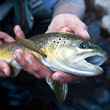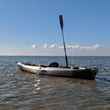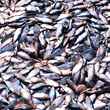In the process of teaching fly casting, certain faults of technique show up regularly among my students. In the notes I send to each student after a lesson, I find myself frequently reiterating certain basic principles. Here are a few of the most common. I hope they’ll stimulate you to think about your own casting.
Stroke length
The length of the casting stroke varies with the length of the line. The rule is this: “Short line, short stroke. Longer line, longer stroke”. Most anglers are unaware of this concept, and try to use the same length stroke for all line lengths. As a consequence, their fly and leaders rarely turn over with authority. But adjusting your stroke length to the line length is absolutely essential to good casting. It’s what allows you to maintain complete control of your line, leader and fly at all times.
The elbow
In a mechanically sound casting stroke, the elbow moves up on the backcast and down on the forward cast. There should be no pushing-and-pulling, parallel-to-the-ground motion with your arm or elbow. Ever. The elbow moves up and down—always. It may be a short up and down motion (as in a short cast), but it’s always present. See the video below.
Tailing Loops
If you find yourself tailing your loops (getting wind knots) or your fly ticks your rod as you cast, your first corrective thought should be to raise and lower your elbow during the stroke. Most people think tailing loops are caused by uneven power application (shocking the rod). While that is one cause, in my experience it’s not anywhere near the most common. Most loops are tailed because of a failure to raise and lower the elbow during the casting stroke. Raising and lowering the elbow (which raises and lowers your rod) creates a clear path along which the line can unroll without hitting the rod or colliding with itself.
Lazy Loops
If your leader and fly turn over in a wide, lazy loop and pile up on themselves, shorten your stroke. Authoritative turnover of leader and fly is almost never about equipment, and only rarely about using more effort. Rather, it’s about using the proper length stroke. Most folks need to shorten their stroke as the first step towards a powerful turnover of their fly. In almost all cases, shortening the stroke means not taking the rod so far back on the backcast.
Casting into the wind
To cast into the wind, find the right stroke length first and then speed up the stroke as necessary. No amount of effort or speed will offset a stroke that is too long to begin with. I don’t care if you’re Arnold Schwarzenegger circa 1975, if your stroke is too long your line and leader will simply never straighten out. But by combining the right length stroke with a little more speed, most people can cast adequately even in fairly strong winds. (Your elbow better be moving up and down when you increase your speed, or you will tail your loops.)





























![Meagan Cook with CeCe [left] and her mother Birdie [right], the dog that started it all (Images courtesy: Meagan Cook). meagan cook dog rescue](https://www.hatchmag.com/sites/default/files/styles/gallery_thumbnail/public/field/image/meagancook.jpg?itok=3StbM11l)

Comments
Mark Huber replied on Permalink
Lefty Kreh says to keep the elbow on the shelf. Lefty made excellent casts without tailing loops. Your article says not raising and lowering the elbow is one cause of tailing loops. Why did Lefty’s casts did not have tailing loops?
John Juracek replied on Permalink
Hi Mark,
Thanks for your question; it's one I receive often. When observed from the side, Lefty's elbow frequently did appear to move parallel to the ground, hence his advice to "keep your elbow on the shelf". But if you looked at his stroke from above, you'd see his elbow was also simultaneously moving away from his body on his backcast, and toward his body on the forward stroke. This elbow movement—which is exactly the same thing I'm talking about, simply done in a close-to-horizontal plane—kept his loops from tailing, and his fly from ticking or catching his rod. In other words, he used the same stroke I'm using, but mostly in a different plane. I was never certain as to why Lefty so seldom elaborated on this distinction, because it's important for avoiding tailing loops. String up a rod and try it for yourself. With fundamentally sound elbow movement, it's extremely difficult to tail your loops.
Hope this helps. Thanks again for your question.
John Juracek
Further North replied on Permalink
We frequently move our elbows when casting large pike, musky and bass flies.
Michael c McKinley replied on Permalink
You don't explain why you want to move your elbow. Conversely, Lefty explains in great detail the physics for his steps. Narrow loops are a primary goal. The rod tip path and LENGTH determine loop size and distance. Your videos show no change in the angle between the forearm and the upper arm; ie the elbow is frozen but moves up and down. The up/down movement introduces a very small change in the rod tip elevation, thus avoiding tailing. But longer casts need longer rod movement or stroke; both you and lefty agree. That's where ar, on a shelf comes into play. That is achieved via turning at waist and shoulder and extending the hand (changing the angle of the elbow) both behind and in front of the body. If your timing is perfect and the forward path exactly duplicates the backcast, you indeed get a fly hitting the rod tip. So some "elbow up and down " helps give minute rod tip elevation differences. The use of minute, short wrist movements does the same thing.
Marc de Jong replied on Permalink
Good question. I teach it as elevating your elbow on the back cast. It’s really just a drill that results in the loop straightening out on the back cast and not dipping below the plane of the rod tip on the forward cast. Loop turns over and the fly follows on a plane above the rod tip, therefore not a tailing loop. Unfortunately the other cause of the tailing loop, which was mentioned in the article, is caused by the short stroking of the forward stroke which causes the uneven application of power. I think the difficulty for most casters is diagnosing the issue while casting. It’s not necessarily easy to identify in videos, depending on the angle being filmed from.
If you do the “parallel” push pull and the short stroke combined, it’s like a guaranteed tailing loop. Sometimes it’s hard to make a tailing loop when I’m instructing, and that’s a guaranteed way to demonstrate it.
David replied on Permalink
I have a simpler question, John. When you, and other fly fishing authors, are talking about a 20 foot cast does that mean 20 feet of line plus a 9 foot leader, or, do you mean 11 feet of line and a 9 foot leader? Thx -- David
John Juracek replied on Permalink
Hi David,
It means line and leader combined. (We measure distance from our feet to where the fly lands.)
John
Marc de Jong replied on Permalink
Great content. The other difficulty with the tailing loop is when the caster goes 3/4 arm and has to apply the “raise and lower” action while on a more horizontal plane.
Pages